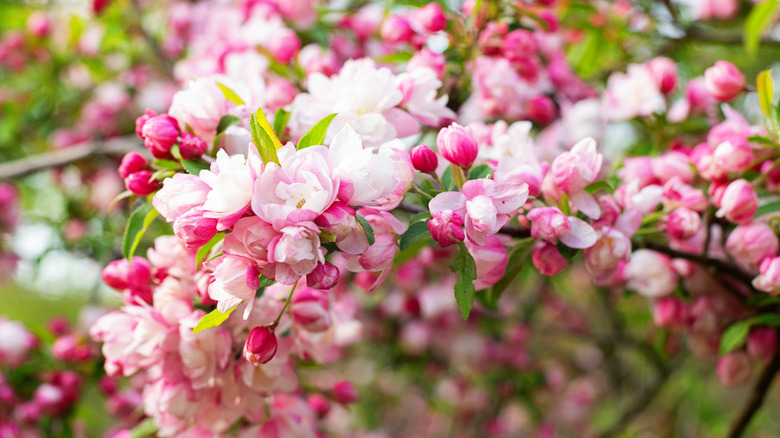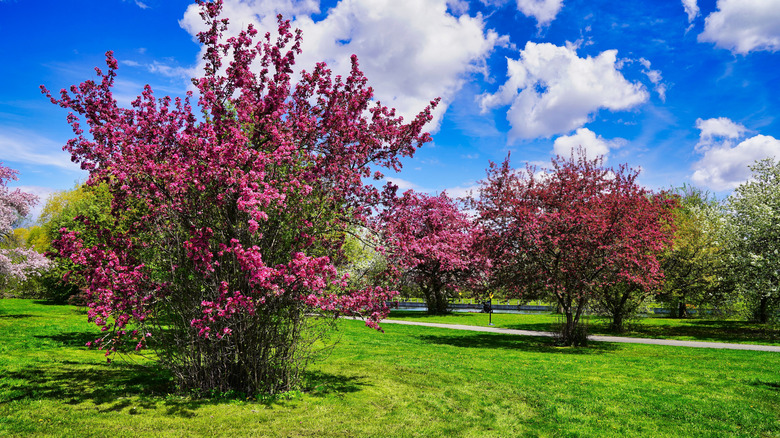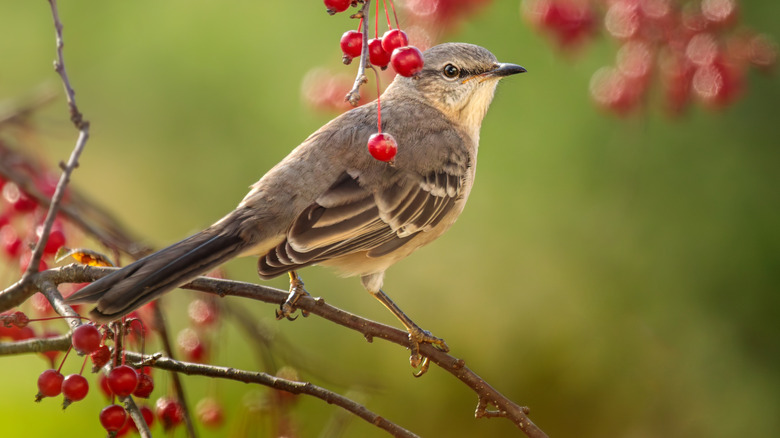Growing A Crabapple Tree? Avoid These Common Mistakes
Have you ever walked around your neighborhood only to discover a tree so beautiful you felt compelled to look it up? If it had pink and white flowers, chances are good it was a crabapple (Malus sylvestris). This tree is more than just pretty, though. Its fruits are actually edible for humans, and serve as an important food source for many wild animal species. While these trees are not particularly hard to grow, crabapples do have their own set of needs which must be met for the best results. Growing in USDA Hardiness Zones 4a through 8b, these fruit trees need full sun, although since they naturally grow along forest edges and in hedgerows, they can handle partial shade. They also prefer moist but well-drained soil.
Things like soil and light needs are important when deciding on which of the many different types of crabapples you can grow in your yard. Plus, there are some specific things to keep in mind to get the best results with your crabapple — and to reduce the amount of work you will have to do. Most importantly, properly pruning your crabapple tree and ensuring you find a good location – away from hardscapes or heavily used areas — will ensure your tree not only looks its best but will also save you from the extra headache of dealing with fallen fruit.
Not pruning enough
Crabapples will often develop suckers at their base, so to keep your tree looking like a tree, and not a shrub, you will need to cut these back regularly. To make this job easier, you should implement another tip to keep your tree happy: mulch. There are plenty of reasons to mulch around your tree, but for crabapple trees specifically, mulching up to the drip line can make it easier to find and remove any suckers.
Using hand pruners, follow the suckers back to where they originate. This may mean you need to scrape away the mulch and soil. The suckers will likely emerge in spring, but if you wait until early summer to remove them, you may be able to minimize regrowth. Don't be fooled, though. It's likely that you will need to get out your pruners throughout the growing season. Established crabapples often grow dense canopies, so keep your pruning confined to branches that are an inch or less in diameter, and spread out the cuts over multiple seasons.
Planting near a patio or other heavy traffic area
One of the highlights of having a crabapple in your landscape is the fruit it produces. Which variety you have will dictate when the tree's fruit is ready for eating, however birds, squirrels, and raccoons all also like to feast on crabapples. So, unless you want these critters — and the mess they make — all over your patio or car, you may want to keep this tree relegated to a more remote part of your yard. Plus, by planting it further away you won't have to worry about cleaning fallen fruit from your patio furniture or regularly sweeping your driveway.
Crabapples are also one of many great ways to bring biodiversity to your garden. With that in mind, you should definitely consider adding one to the mix if you have the right space in a wildlife-friendly garden. However, you want to make sure you use them in the right place to keep them from becoming a dreaded chore. Keep that in mind, along with the tree's sunlight and well-draining soil needs when selecting the perfect spot to plant one.


